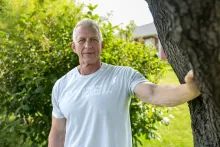Surgery and rehab team step up after sledding mishap leads to major hip fracture
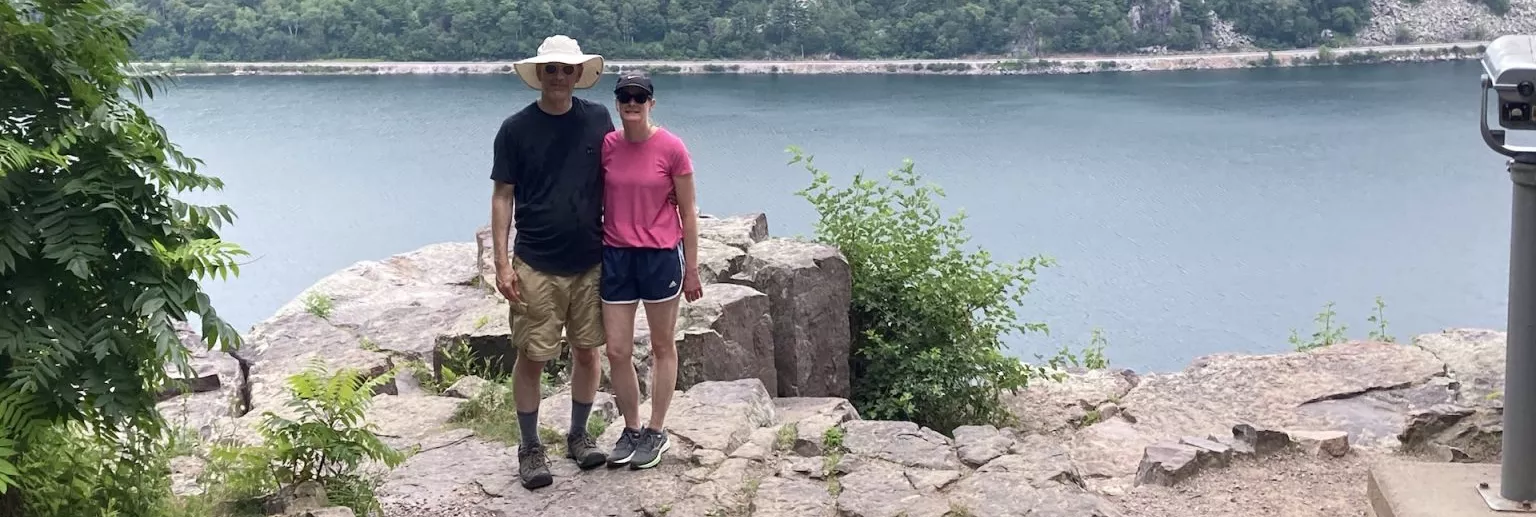
Two years ago, Steve Woodward’s first sentence after hip surgery wasn’t filled with words of pain, but rather ones of humor.
“I remember waking up and asking, ‘Is my hip still there?’” he says.
Today you wouldn’t necessarily guess that the sailing instructor and avid hiker had what many health care professionals called the “worst hip fracture they had ever seen.”
Woodward, director of clinical services at UI Health Care–Iowa River landing, credits his incredible recovery to the superb care he received from UI Orthopedics and Rehabilitation and the University of Iowa Health Network Rehabilitation Hospital, a venture with Encompass Health.
The accident: A high-energy sledding mishap
“My son and I bought these sleds that were supposed to be built for speed, and we decided to try them out on a large hill at Pinicon Ridge Park,” Woodward says.
He remembers how they were the only ones sledding on the hill at the time. His son took the first ride down the hill on his own sled.
“I waited until he was at the bottom and started down the middle of the hill and then I remember being in the air and my feet were above my head. I think it was then that I knew things were going to be bad,” Woodward says.
Woodward landed on his right hip, immediately feeling a “crushing” sensation beneath him. His son—who is now an Eagle Scout—rushed over with excitement.
“He came up to me and said, ‘Papa! That was really cool, are you okay?’ And I said, ‘No, I’m not.’” Woodward says.
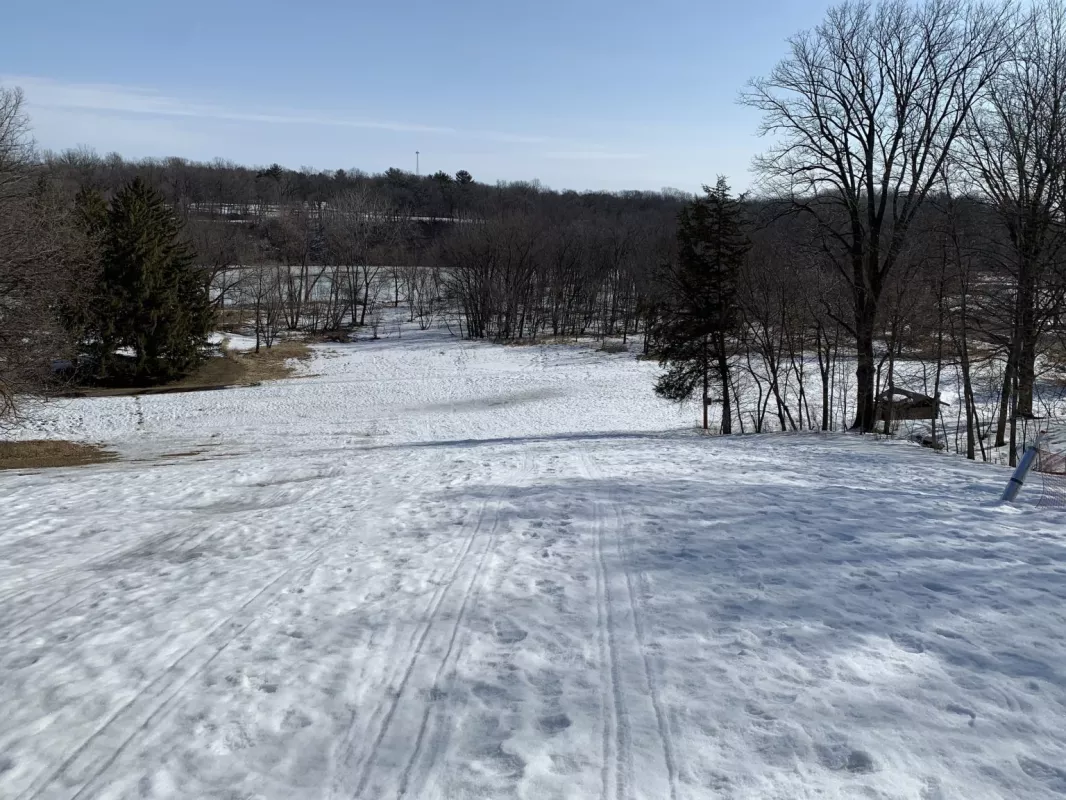
Woodward quickly found himself in a local emergency room in Cedar Rapids. Given the conversations and reactions of the doctors and nurses caring for him, he believed he needed to be seen by the orthopedic team with UI Health Care.
Enter orthopedic surgeon Michael Willey, MD, who was a bit surprised that Woodward’s injury—classified as an acetabular fracture—occurred because of a sledding accident.
“Usually when a person has an acetabular fracture, it’s because they wreck a car or a motorcycle or fall off a roof. It had to be a pretty high energy sledding accident to cause that bad of a fracture,” Willey says.
Woodward remembers the confidence Willey showed as he planned to fix Woodward’s hip by surgical repair with two titanium plates. Woodward recalls the moment he knew that Wiley’s goal aligned with his.
“He told me, ‘Our goal is getting you walking again,” Woodward says.
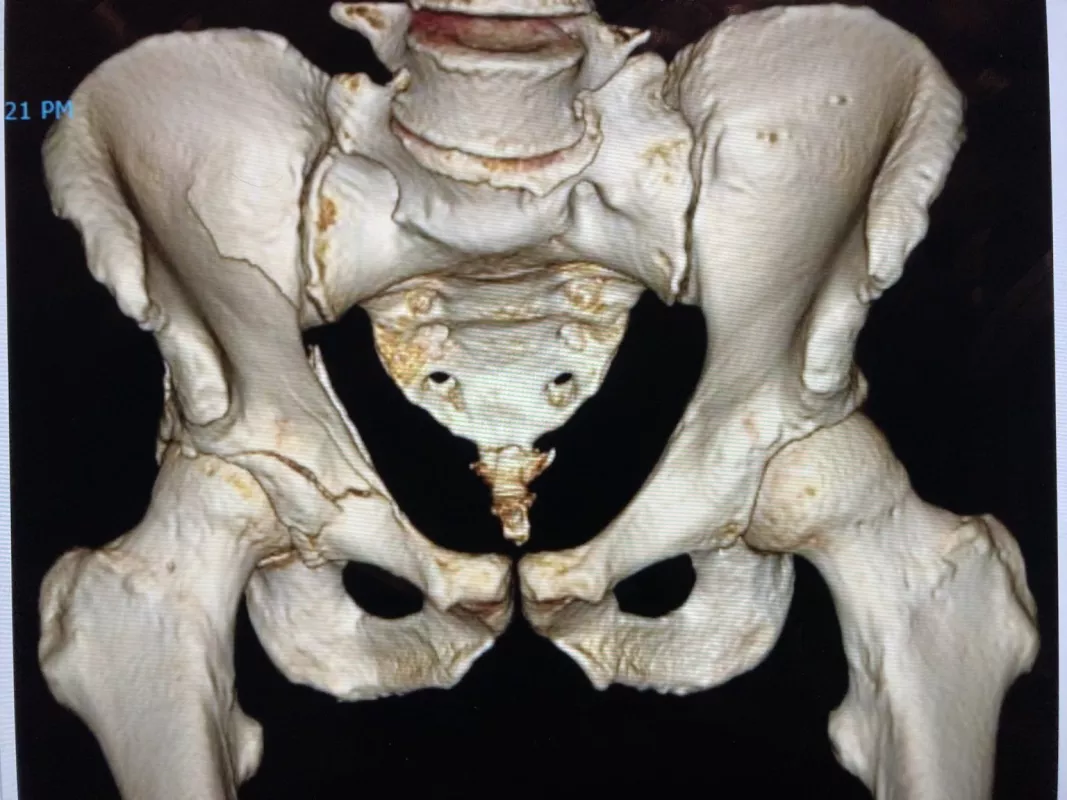
The recovery: Enter the UI Health Network Rehabilitation Hospital
After his surgery and a short stint of physical therapy in the hospital, Woodward was referred to the UI Health Network Rehabilitation Hospital in Coralville.
In the rehab hospital, Woodward faced two weeks of intensive inpatient treatment, including physical therapy (PT) and occupational therapy (OT). Therapists taught him how to move his leg in ways that wouldn’t cause further injury while he healed. This helped him when he got home, and his wife had to assist him around the house.
“The rehab hospital harnesses your own motivation, or it gives you the structure to have your own,” Woodward says. “It’s not easy. I knew that I had to be ready, motivated, and have a positive attitude.”
As someone who witnesses the care UI Health Care is known for, Woodward complied because he trusted his care team.
“He was a very motivated person to heal up from an injury like that, and that made a big impact on his recovery,” Willey says.
The final leg of recovery: An expert physical therapist
Up to this point, Woodward’s journey to recovery had been filled with struggle, a little humor, and a lot of dedication.
“After an accident like Steve’s, he had to build strength and endurance back, and he had to get his mobility and flexibility back,” says Amanda Paulson, PT, DPT, OCS.
Paulson worked with Woodward twice a week for outpatient therapy, progressing based on pain and functional abilities which required constant communication regarding Woodward’s pain tolerance.
One of the recovery challenges was to get the leg moving again. Woodward relates his experience with physical therapy to one of his favorite movies.
“It was like the scene from Star Wars when Luke is told by Yoda to ‘do or do not, there is no try.’ I just could not move my leg despite Amanda encouraging me and my mind telling it to move. I was so disappointed that I could not move my leg, Amanda looked me in the eyes and said, ‘You will get there.’”
Over time—with the guidance and encouragement from Paulsen— Woodward was able to start moving the leg, gaining strength and eventually to re-learn how to walk and maintain his balance.
Although his hip bothers him some days, Woodward is back to living the active lifestyle he hoped for.
“Devils lake is our favorite park in the Midwest and my goal was to be able to hike the trails,” he says. “When we went back, I was hiking slower than in the past but was able to do all of the trails, including Balanced Rock. I continue to enjoy hiking, teaching sailing, and taking care of my collection of beehives.”
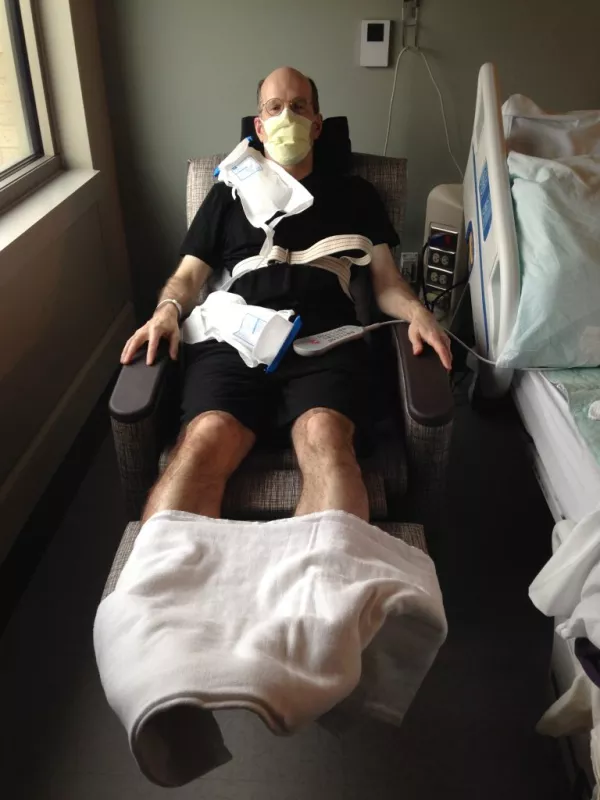
Woodward remains ever grateful for his care team and the expertise of the rehab hospital.
“The rehab hospital was like an accelerator for my recovery,” he says. “I can’t imagine how challenging it would have been if I had just gone home. They prepared me so that coming home wasn’t so daunting.”
But the process was still challenging. Paulson says Woodward is a great example of the kind of recovery that can occur from determination and collaboration. However, both she and Woodward want to be clear about the journey.
“I think it is important that people know recovery is not a linear process. After Steve’s accident, he had months and months of therapy and he was not always progressing in a linear fashion,” Paulson says. “Therapy is a team process and requires collaboration between the patient and provider. Steve and I were able to develop rapport and trust which I think was imperative for his recovery.”
Patient Stories

